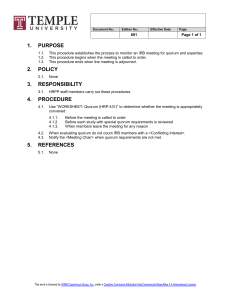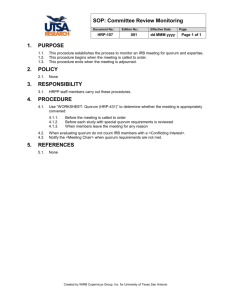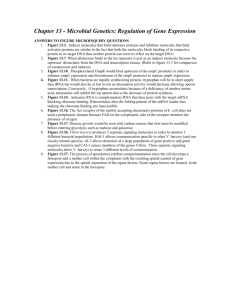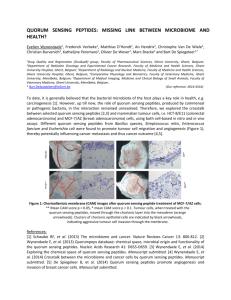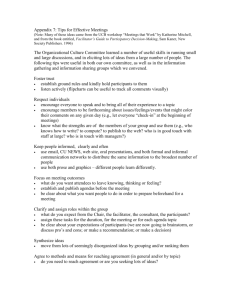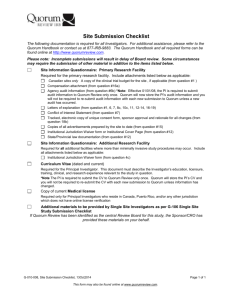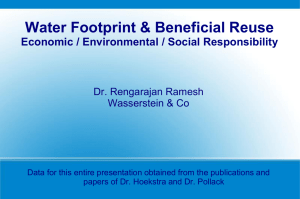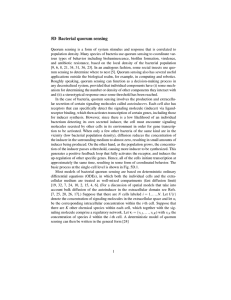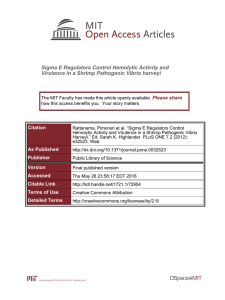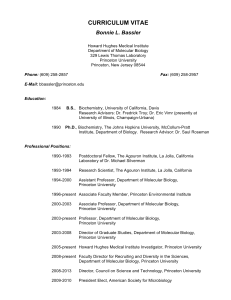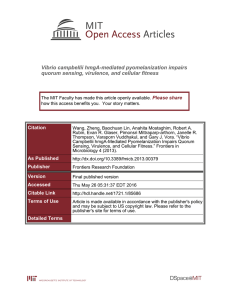butyl-2(5h)-furanone disrupts quorum sensing in vibrio harveyi by
advertisement
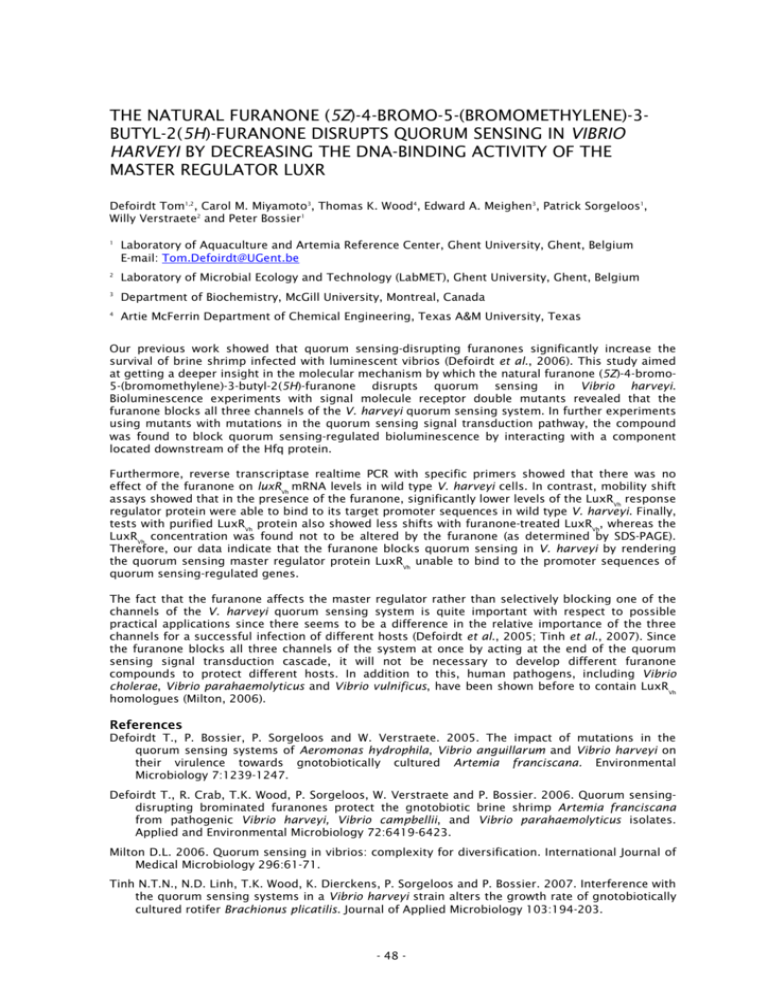
THE NATURAL FURANONE (5Z)-4-BROMO-5-(BROMOMETHYLENE)-3BUTYL-2(5H)-FURANONE DISRUPTS QUORUM SENSING IN VIBRIO HARVEYI BY DECREASING THE DNA-BINDING ACTIVITY OF THE MASTER REGULATOR LUXR Defoirdt Tom1,2, Carol M. Miyamoto3, Thomas K. Wood4, Edward A. Meighen3, Patrick Sorgeloos1, Willy Verstraete2 and Peter Bossier1 1 Laboratory of Aquaculture and Artemia Reference Center, Ghent University, Ghent, Belgium E-mail: Tom.Defoirdt@UGent.be 2 Laboratory of Microbial Ecology and Technology (LabMET), Ghent University, Ghent, Belgium 3 Department of Biochemistry, McGill University, Montreal, Canada 4 Artie McFerrin Department of Chemical Engineering, Texas A&M University, Texas Our previous work showed that quorum sensing-disrupting furanones significantly increase the survival of brine shrimp infected with luminescent vibrios (Defoirdt et al., 2006). This study aimed at getting a deeper insight in the molecular mechanism by which the natural furanone (5Z)-4-bromo5-(bromomethylene)-3-butyl-2(5H)-furanone disrupts quorum sensing in Vibrio harveyi. Bioluminescence experiments with signal molecule receptor double mutants revealed that the furanone blocks all three channels of the V. harveyi quorum sensing system. In further experiments using mutants with mutations in the quorum sensing signal transduction pathway, the compound was found to block quorum sensing-regulated bioluminescence by interacting with a component located downstream of the Hfq protein. Furthermore, reverse transcriptase realtime PCR with specific primers showed that there was no effect of the furanone on luxRVh mRNA levels in wild type V. harveyi cells. In contrast, mobility shift assays showed that in the presence of the furanone, significantly lower levels of the LuxRVh response regulator protein were able to bind to its target promoter sequences in wild type V. harveyi. Finally, tests with purified LuxRVh protein also showed less shifts with furanone-treated LuxRVh, whereas the LuxRVh concentration was found not to be altered by the furanone (as determined by SDS-PAGE). Therefore, our data indicate that the furanone blocks quorum sensing in V. harveyi by rendering the quorum sensing master regulator protein LuxRVh unable to bind to the promoter sequences of quorum sensing-regulated genes. The fact that the furanone affects the master regulator rather than selectively blocking one of the channels of the V. harveyi quorum sensing system is quite important with respect to possible practical applications since there seems to be a difference in the relative importance of the three channels for a successful infection of different hosts (Defoirdt et al., 2005; Tinh et al., 2007). Since the furanone blocks all three channels of the system at once by acting at the end of the quorum sensing signal transduction cascade, it will not be necessary to develop different furanone compounds to protect different hosts. In addition to this, human pathogens, including Vibrio cholerae, Vibrio parahaemolyticus and Vibrio vulnificus, have been shown before to contain LuxRVh homologues (Milton, 2006). References Defoirdt T., P. Bossier, P. Sorgeloos and W. Verstraete. 2005. The impact of mutations in the quorum sensing systems of Aeromonas hydrophila, Vibrio anguillarum and Vibrio harveyi on their virulence towards gnotobiotically cultured Artemia franciscana. Environmental Microbiology 7:1239-1247. Defoirdt T., R. Crab, T.K. Wood, P. Sorgeloos, W. Verstraete and P. Bossier. 2006. Quorum sensingdisrupting brominated furanones protect the gnotobiotic brine shrimp Artemia franciscana from pathogenic Vibrio harveyi, Vibrio campbellii, and Vibrio parahaemolyticus isolates. Applied and Environmental Microbiology 72:6419-6423. Milton D.L. 2006. Quorum sensing in vibrios: complexity for diversification. International Journal of Medical Microbiology 296:61-71. Tinh N.T.N., N.D. Linh, T.K. Wood, K. Dierckens, P. Sorgeloos and P. Bossier. 2007. Interference with the quorum sensing systems in a Vibrio harveyi strain alters the growth rate of gnotobiotically cultured rotifer Brachionus plicatilis. Journal of Applied Microbiology 103:194-203. - 48 -
